If you were in Peabody on July 30th, 1903, you could have been one of the 3,000 spectators at the dedication of Wilson Square.
This week in the postcard, we talk about the evolution of this corner of Peabody. European settlement of the Wilson Square area began in the 1640s. Wilson Square is considered the intersection of Central, Andover and Pulaski (previously Liberty) Streets.
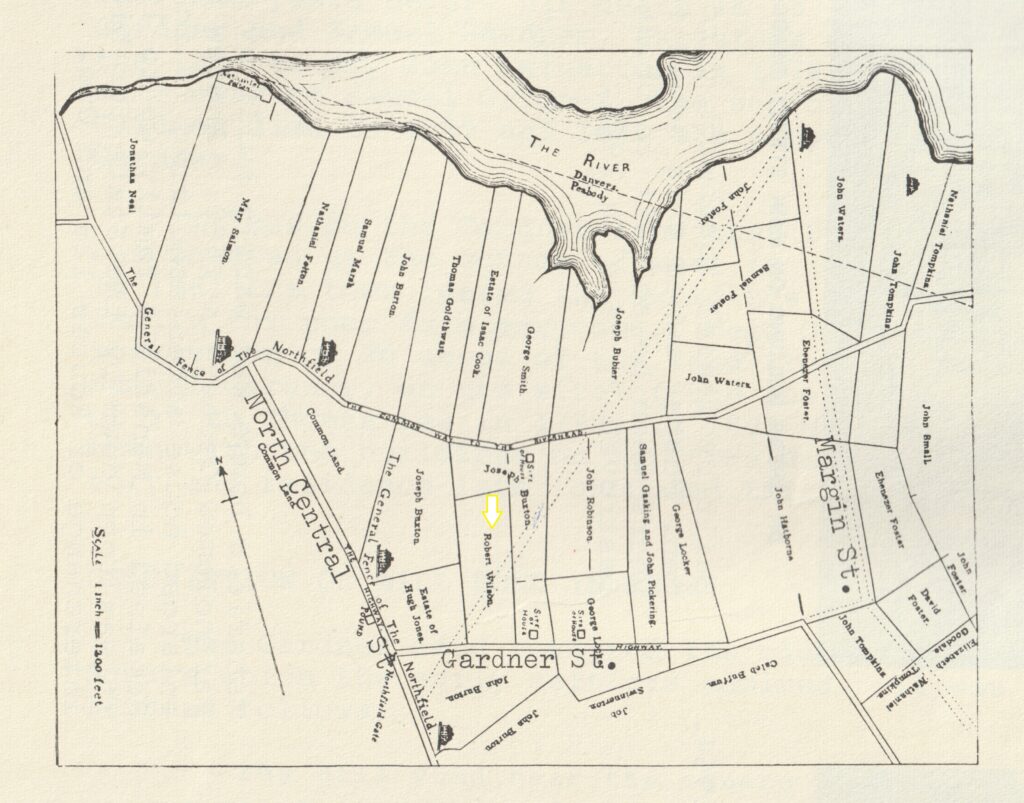
Wilson Square and points north, circa 1700. Map is edited with yellow arrow to show Robert and Deborah Wilson’s property (Wilson Square namesake). Source: John Wells, The Peabody Story, between pages 128-129.
By the 1640s, Central Street was considered “Ye Kings Highway,” but was also referred to as “Gape” or “Garp” Lane. Throughout its history, people from this neighborhood would call themselves “laners” as a result. By 1660, the west side of Central Street was the local animal pound and just north of that was a large water spring that was the primary water source for the area.
The Wilson Square name was derived from one of its first settlers, Robert and Deborah Wilson. Their land is denoted by the yellow arrow above. Like many who lived in Wilson Square, the family were potters. Six men in the Wilson family fought with the local militia at the Battle of Lexington. Jonathan Wilson III, a Revolutionary War soldier, was buried on the site of the North Shore Mall; today, a monument exists to him there. His remains were moved to Cedar Grove Cemetery.
The Wilsons were also one of many Quaker families in the area, which includes the Osborns, Southwicks and Buxtons. One of the most prominent residents of Wilson Square was a young Nathaniel Bowditch (1773-1838). Before Nathaniel Bowditch became a famous mathematician, astronomer and author of The American Practical Navigator, he was a young boy whose family rented 121 Andover Street. The home’s owner, John Osborn, was a Quaker who temporarily relocated his family to Kingstown, New Hampshire to avoid any participation in the American Revolutionary War. Nathaniel Bowditch’s education truly began in Peabody, on Wilson Square.
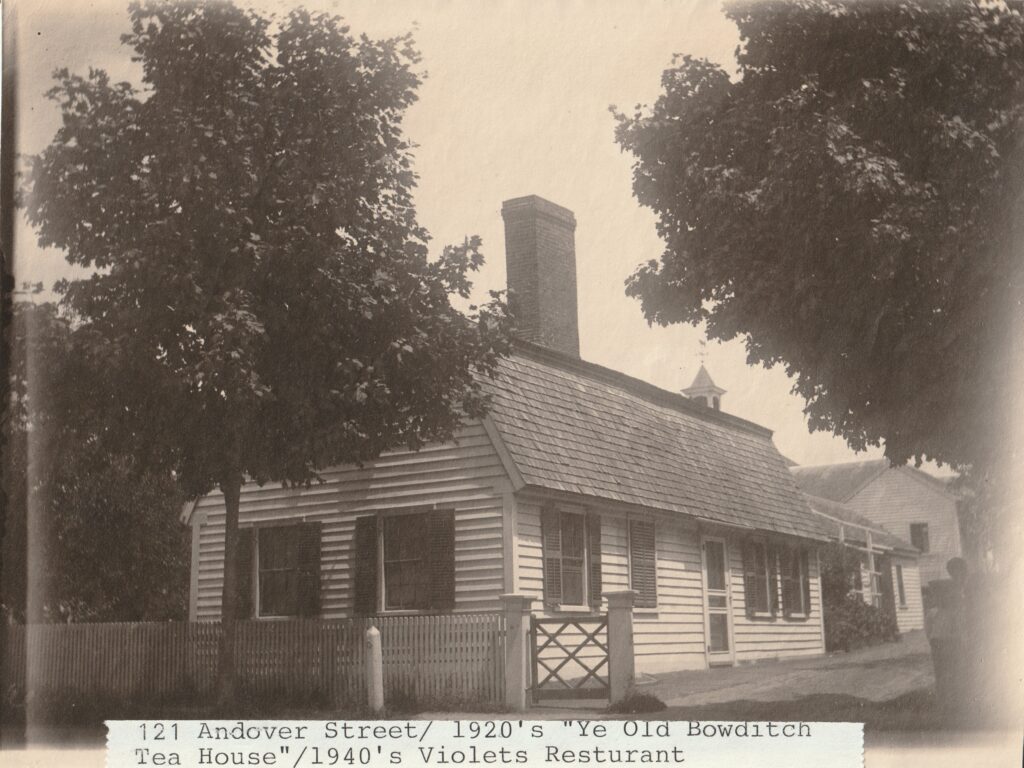
Image of Wilson Square, circa 1900, Bowditch House
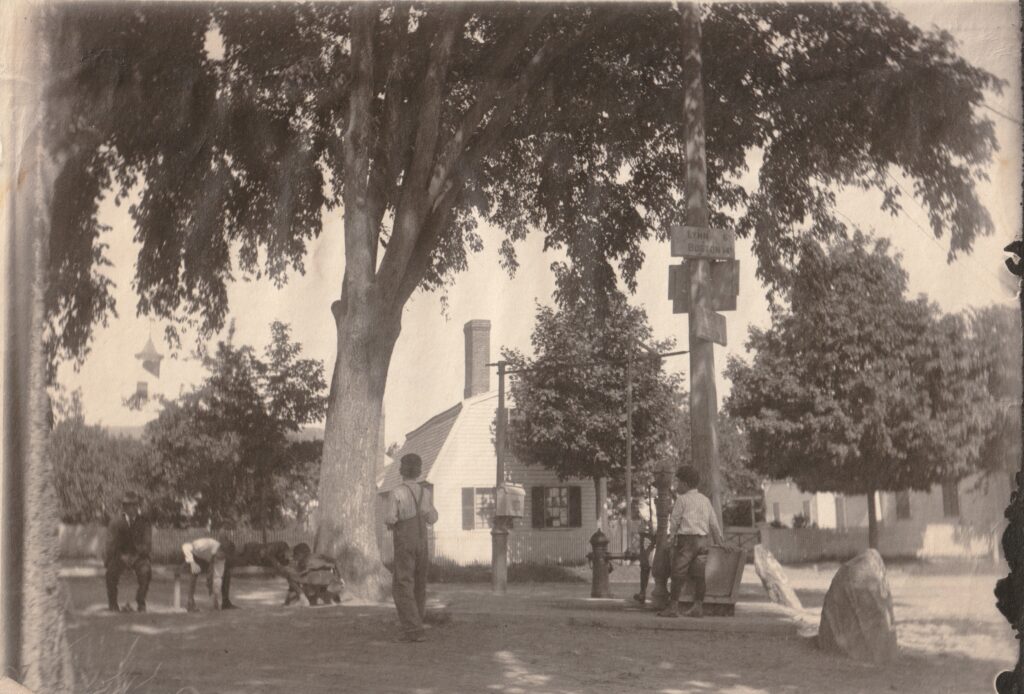
Image of Wilson Square, circa 1900, Bowditch House in the background
In 1823, a well was dug at Wilson Square. This became the location of a communal water pump and fountain. It was beloved by the community, but the water became contaminated in the 1920s, and the pump itself caused multiple auto accidents. In 1927, the city decided to remove the fountain, much to the locals’ chagrin.
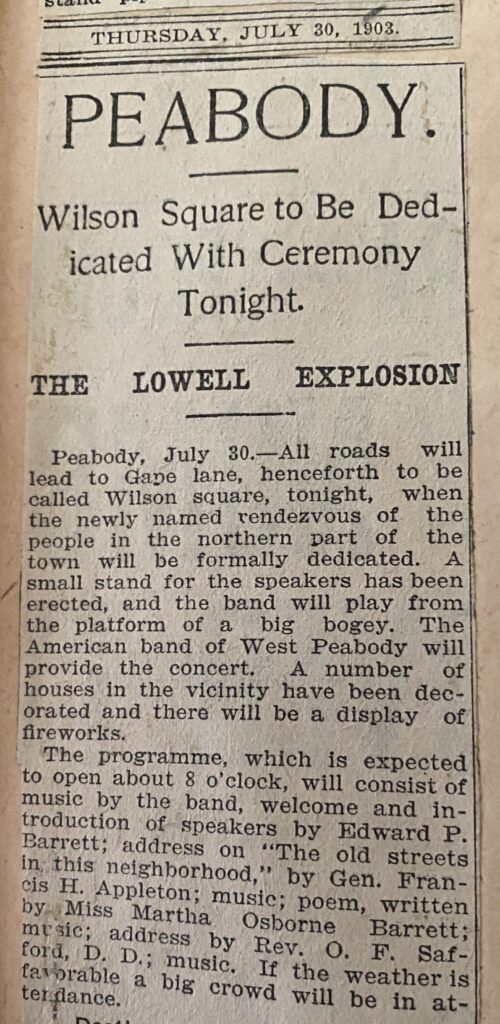
The Salem Evening News, “Peabody Correspondence,” July 30, 1903
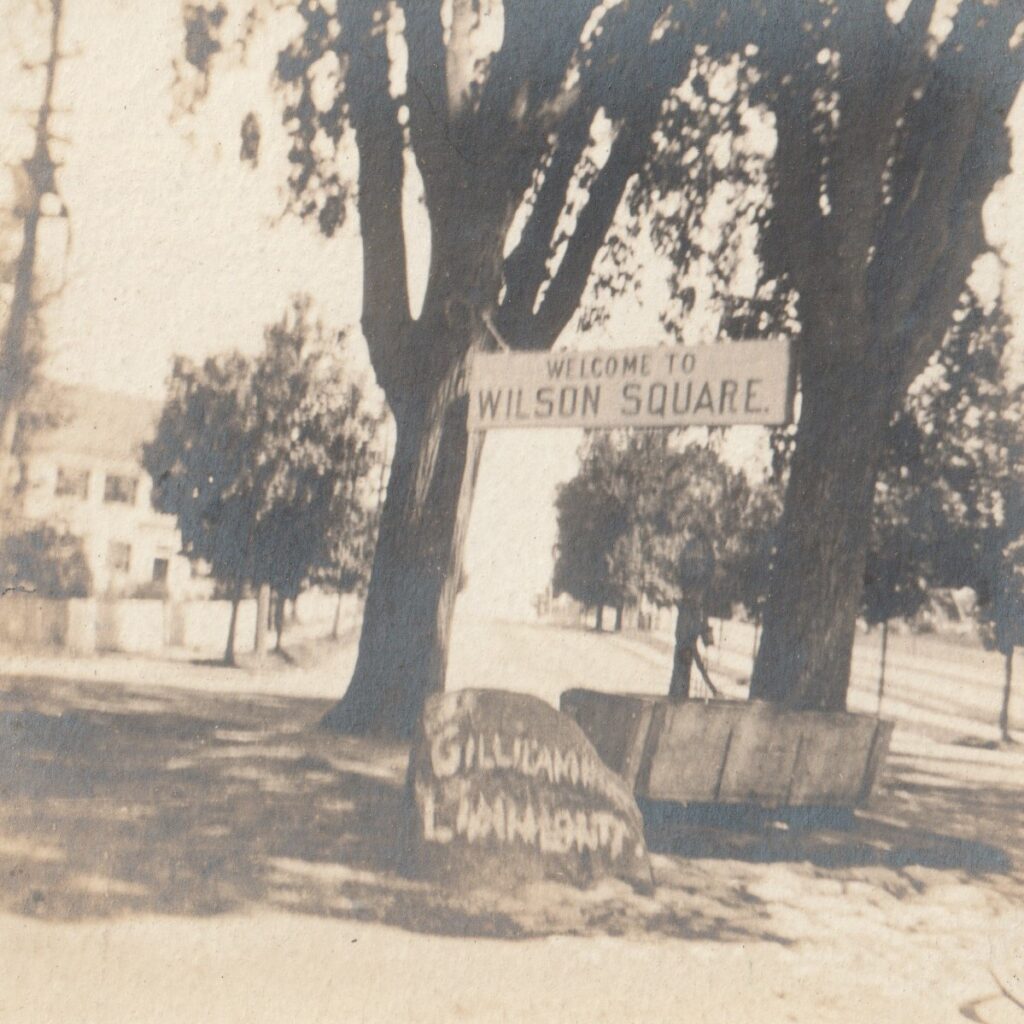
Image, Wilson Square, 1903
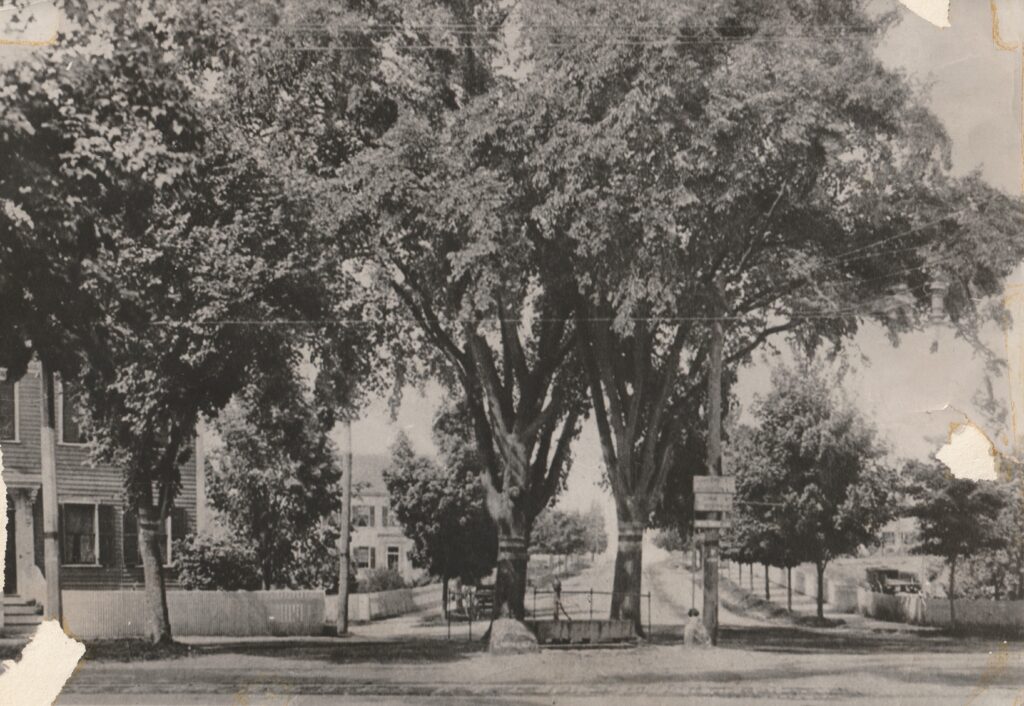
Image, Wilson Square, looking up Liberty Street (now Pulaski Street), 1903
The dedication of Wilson Square on July 30th, 1903 was a big bash. There were 3,000 spectators. Hundreds of colorful Japanese lanterns lined Wilson Square.
What are your recollections of Wilson Square? We would love to hear about more recent history of this corner.
References
Martha Osborne Barrett, “Some Changes on the Way to School since 1838,” July 1900.
The Salem Evening News, “Peabody Correspondence”, July 30, 1903.
The Salem Evening News, “Changes in the Road on Andover Street and Wilson’s Corner”, November 19, 1926.
The Salem Evening News, “Peabody Paragraph”, August 31, 1927.
The Salem Evening News, John O. Buxton, “The Old Back Road Once Main Highway to North Danvers,” December 28, 1929.
John Wells, The Peabody Story, Essex Institute, 1972, pages 111-124, 128-129, 136-139, 171, 174 and 375.
The Peabody Extra, S.M. Smoller, “Wilson Square hosted Quakers, potters, fried claims.” September 11, 1999.
